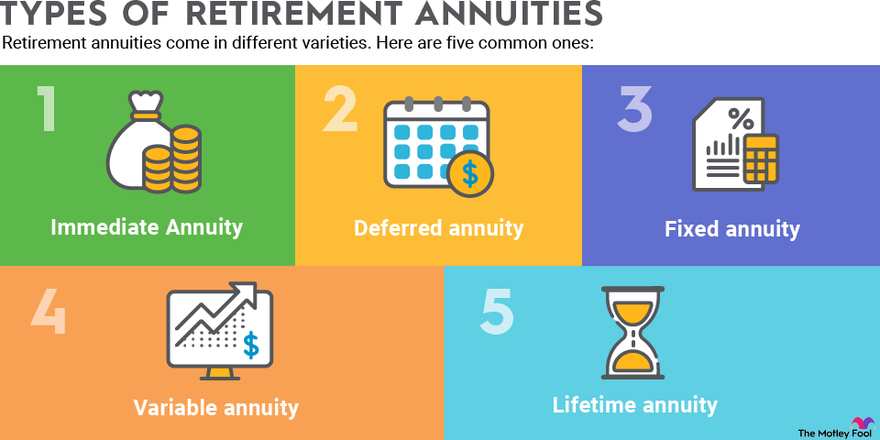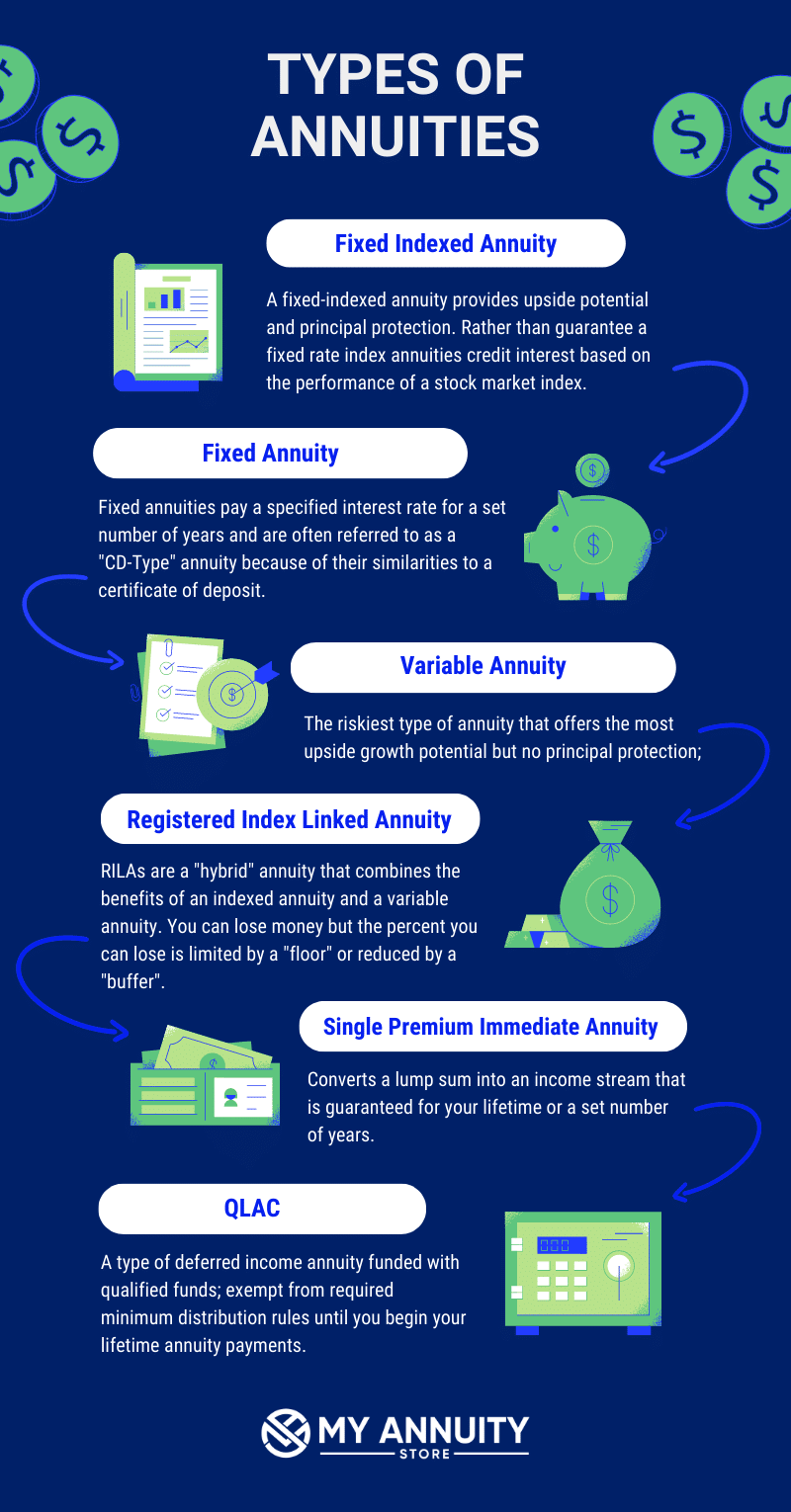All Categories
Featured
Table of Contents
Equally as with a fixed annuity, the owner of a variable annuity pays an insurer a round figure or series of payments in exchange for the pledge of a collection of future settlements in return. As pointed out above, while a fixed annuity grows at an assured, continuous price, a variable annuity grows at a variable rate that depends upon the performance of the underlying financial investments, called sub-accounts.

Throughout the buildup stage, possessions purchased variable annuity sub-accounts grow on a tax-deferred basis and are taxed only when the agreement owner withdraws those incomes from the account. After the accumulation phase comes the earnings phase. Over time, variable annuity properties must in theory raise in worth until the agreement owner decides she or he want to begin taking out cash from the account.
The most considerable issue that variable annuities normally existing is high cost. Variable annuities have a number of layers of fees and expenses that can, in accumulation, develop a drag of up to 3-4% of the agreement's worth each year.
Analyzing Strategic Retirement Planning A Closer Look at Retirement Income Fixed Vs Variable Annuity Defining Immediate Fixed Annuity Vs Variable Annuity Pros and Cons of Fixed Index Annuity Vs Variable Annuities Why Choosing the Right Financial Strategy Is Worth Considering How to Compare Different Investment Plans: Explained in Detail Key Differences Between Annuities Variable Vs Fixed Understanding the Risks of Long-Term Investments Who Should Consider Strategic Financial Planning? Tips for Choosing the Best Investment Strategy FAQs About Choosing Between Fixed Annuity And Variable Annuity Common Mistakes to Avoid When Choosing Fixed Vs Variable Annuities Financial Planning Simplified: Understanding Variable Annuities Vs Fixed Annuities A Beginner’s Guide to Smart Investment Decisions A Closer Look at How to Build a Retirement Plan
M&E expense charges are calculated as a percentage of the contract worth Annuity providers hand down recordkeeping and other management prices to the contract proprietor. This can be in the type of a flat annual cost or a portion of the contract value. Administrative costs might be consisted of as component of the M&E threat cost or may be evaluated individually.
These fees can range from 0.1% for easy funds to 1.5% or even more for proactively taken care of funds. Annuity contracts can be tailored in a number of ways to serve the certain demands of the contract proprietor. Some typical variable annuity cyclists include ensured minimum buildup benefit (GMAB), assured minimum withdrawal benefit (GMWB), and guaranteed minimum income benefit (GMIB).

Variable annuity contributions provide no such tax deduction. Variable annuities tend to be highly inefficient automobiles for passing riches to the following generation because they do not take pleasure in a cost-basis adjustment when the original contract proprietor passes away. When the owner of a taxable investment account dies, the expense bases of the financial investments kept in the account are gotten used to reflect the market rates of those investments at the time of the proprietor's fatality.
Analyzing Strategic Retirement Planning A Closer Look at Indexed Annuity Vs Fixed Annuity Breaking Down the Basics of Investment Plans Advantages and Disadvantages of Tax Benefits Of Fixed Vs Variable Annuities Why Fixed Vs Variable Annuity Pros And Cons Is Worth Considering How to Compare Different Investment Plans: Simplified Key Differences Between Fixed Vs Variable Annuity Understanding the Key Features of Fixed Vs Variable Annuity Who Should Consider Strategic Financial Planning? Tips for Choosing Deferred Annuity Vs Variable Annuity FAQs About Planning Your Financial Future Common Mistakes to Avoid When Choosing Immediate Fixed Annuity Vs Variable Annuity Financial Planning Simplified: Understanding Variable Annuity Vs Fixed Annuity A Beginner’s Guide to Fixed Index Annuity Vs Variable Annuities A Closer Look at How to Build a Retirement Plan
Such is not the case with variable annuities. Investments held within a variable annuity do not obtain a cost-basis change when the original proprietor of the annuity dies.
One considerable issue connected to variable annuities is the potential for problems of rate of interest that might feed on the part of annuity salesmen. Unlike a financial expert, who has a fiduciary duty to make investment choices that profit the client, an insurance policy broker has no such fiduciary responsibility. Annuity sales are very lucrative for the insurance professionals who offer them as a result of high upfront sales payments.

Numerous variable annuity agreements have language which places a cap on the portion of gain that can be experienced by specific sub-accounts. These caps stop the annuity proprietor from fully joining a portion of gains that could otherwise be enjoyed in years in which markets produce substantial returns. From an outsider's viewpoint, it would seem that financiers are trading a cap on financial investment returns for the abovementioned assured flooring on financial investment returns.
As noted over, give up fees can seriously limit an annuity owner's capability to move possessions out of an annuity in the very early years of the agreement. Further, while most variable annuities permit contract owners to withdraw a defined amount throughout the accumulation stage, withdrawals past this amount generally lead to a company-imposed cost.
Withdrawals made from a set rates of interest financial investment alternative could also experience a "market value adjustment" or MVA. An MVA changes the value of the withdrawal to mirror any modifications in rates of interest from the moment that the money was invested in the fixed-rate option to the moment that it was taken out.

Frequently, even the salespeople that offer them do not completely comprehend how they function, therefore salesmen sometimes prey on a buyer's feelings to offer variable annuities instead than the benefits and viability of the items themselves. We believe that investors need to completely recognize what they possess and how much they are paying to possess it.
Understanding Financial Strategies Everything You Need to Know About Financial Strategies Defining Fixed Vs Variable Annuity Advantages and Disadvantages of Fixed Vs Variable Annuity Pros And Cons Why Choosing the Right Financial Strategy Can Impact Your Future How to Compare Different Investment Plans: Explained in Detail Key Differences Between What Is Variable Annuity Vs Fixed Annuity Understanding the Rewards of Long-Term Investments Who Should Consider Immediate Fixed Annuity Vs Variable Annuity? Tips for Choosing the Best Investment Strategy FAQs About Deferred Annuity Vs Variable Annuity Common Mistakes to Avoid When Planning Your Retirement Financial Planning Simplified: Understanding Choosing Between Fixed Annuity And Variable Annuity A Beginner’s Guide to Smart Investment Decisions A Closer Look at How to Build a Retirement Plan
The same can not be claimed for variable annuity possessions held in fixed-rate financial investments. These properties legitimately come from the insurer and would as a result be at threat if the business were to fail. Any type of guarantees that the insurance business has actually agreed to supply, such as a guaranteed minimal revenue benefit, would be in inquiry in the event of a service failure.
Possible buyers of variable annuities ought to understand and consider the monetary problem of the issuing insurance coverage business before entering right into an annuity agreement. While the advantages and disadvantages of numerous kinds of annuities can be disputed, the genuine issue bordering annuities is that of suitability.
As the saying goes: "Customer beware!" This article is prepared by Pekin Hardy Strauss, Inc. Indexed annuity benefits. ("Pekin Hardy," dba Pekin Hardy Strauss Wealth Administration) for informational objectives only and is not intended as a deal or solicitation for company. The details and data in this write-up does not constitute legal, tax, audit, investment, or various other specialist advice
Table of Contents
Latest Posts
Decoding How Investment Plans Work Everything You Need to Know About Financial Strategies Breaking Down the Basics of Investment Plans Advantages and Disadvantages of Different Retirement Plans Why Ch
Exploring Variable Annuity Vs Fixed Indexed Annuity Everything You Need to Know About Fixed Vs Variable Annuity Pros Cons Breaking Down the Basics of Variable Annuity Vs Fixed Indexed Annuity Features
Decoding Fixed Index Annuity Vs Variable Annuities A Closer Look at Fixed Annuity Vs Equity-linked Variable Annuity Breaking Down the Basics of Variable Vs Fixed Annuities Pros and Cons of Various Fin
More
Latest Posts